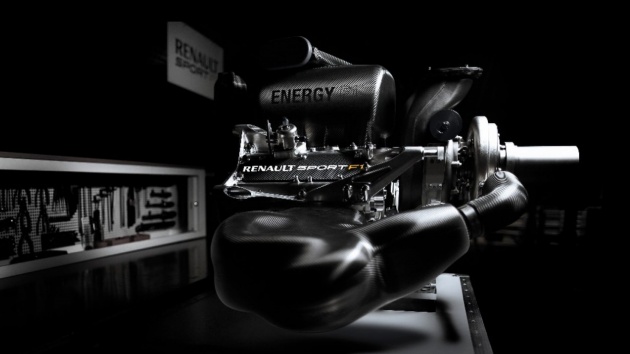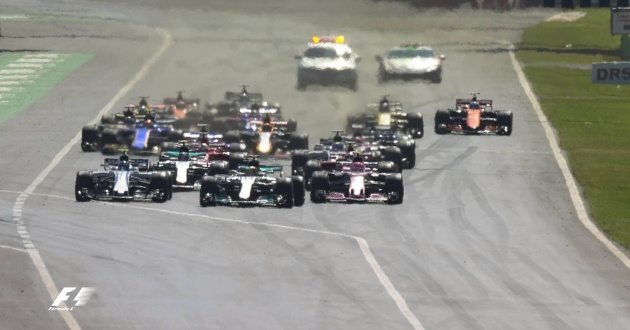The FIA and Formula 1 have laid out proposals for the next generation of power units (PU) that will be used from 2021, with an overall framework set to be published at the end of 2017.
“We’ve carefully listened to what the fans think about the current PU and what they would like to see in the near future, with the objective to define a set of regulations which will provide a powertrain that is simpler, cheaper and noisier and will create the conditions to facilitate new manufacturers to enter Formula 1 as powertrain suppliers and to reach a more levelled field in the sport,” said Ross Brawn, managing director of Formula 1.
Among the key features of the proposals presented to manufacturer representatives (engine suppliers) is the continued use of the 1.6 litre turbocharged V6 hybrid power unit first introduced in 2014. The single turbo attached to the engine will need to follow dimensional constraints and weight limits.
It isn’t all identical though, as a number of modifications will be introduced, starting with a higher engine rev limit of 18,000 rpm – a 3,000 rpm increase from before. According to officials, this is done to improve the sound of the engines, something that fans have been longing for.
Next up is the introduction of a more powerful MGUK (Motor Generator Unit Kinetic) element, which converts kinetic energy from braking into electrical energy and then deploys it under acceleration via an electric motor.
The more powerful system will focus on manual driver deployment during a race, together with the option to save up energy over several laps to give a driver controlled tactical element to racing. All teams must also use standardised energy storage and control electronics systems, to cut costs.
While the MGUK gets uprated, the MGUH (Motor Generator Unit Heat) element of the power unit will be removed altogether. The MGUH is an energy recovery system connected to the turbocharger, and converts heat energy from exhaust gases into electrical energy.
The energy can be used to power the MGUK, or kept in reserve for later use. It also acts like an e-turbo, controlling the speed of the turbo, speeding it up (to prevent turbo lag) or slowing it down in place of a more traditional wastegate.
There will also be stricter restrictions on the design of engine internals to reduce development costs and “discourage extreme designs and running conditions.” Furthermore, a “higher level” of new external parameters are said to provide teams with a “plug-and-play engine/chassis/transmission swap capability”.
A number of manufacturers have expressed interest in entering Formula One as engine suppliers, subject to the proposed change in engine regulations. The prospect of lower engine development costs have attracted the interest of companies like Porsche and Aston Martin.
Looking to sell your car? Sell it with Carro.





Each time they lower the cost, they lose more fans. Dun they geddit?
Couldn’t agree more. People want to see F1 cars with the nest technology out there racing. I’d rather have Merc, Ferrari, Red Bull, McLaren and Renault running with 3 or 4 cars to make up the grid if the smaller teams cannot afford to join
they say the cost will be lower but in reality the complex turbo V6 are more costly than the previous NA V8. Bring back the NA V8!
Unfortunately, most of the manufacturers & FIA top brass have no interest to return to the days of N.A engines on the basis that it has little/no relation to roadcar engine application.The conventional turbo engine side of things is not a big issue for most of the engine manufacturers these days. The main culprit of the high engine development cost is definitely the energy recovery system/hybrid thingy (the element which should be further dumb down).
ya man.. imagine Avatar in cheap sake production. How wonderful will that be…
This year F1 is quite exciting though
I guess FIA still want to have some continuation of the current F1 powertrain concept. Ideally, FIA should have freed up the spec engine configuration rule, and let the engine constructors decide how many engine cylinders that they want to have, while further restricting the hybrid/MGUK unit side of things. A mix of 4,6 & 8 cylinders, turbocharged engine-F1 cars sounds a lot more tempting & interesting!
In the 1980s.. Constructors can choose whether they want to use 3.0 V12 NA or 1.5 turbo v6. Easy, right??
In the early 1980s, Alfa Romeo & Matra (V12 engine) & Cosworth (V8 engine) were the last of the engine constructors that preserved with the N.A engine against the might of the 1.5 turbos. Although eventually & briefly Alfa & Cosworth went for the turbo route. And of course, in those days manufacturers are free to choose the no. of engine cylinders they want to have.